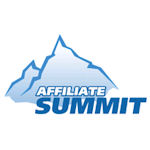 Hey, hey, crazy people. I’m back from lunch (mmm calamari) and ready to hear Shoemoney unleash some crazy Facebook tips. I’ve had the opportunity to listen to Jeremy chat on this subject before so I know today is going to be good. He’s getting ready so if you’re all set at home, let’s go!
Hey, hey, crazy people. I’m back from lunch (mmm calamari) and ready to hear Shoemoney unleash some crazy Facebook tips. I’ve had the opportunity to listen to Jeremy chat on this subject before so I know today is going to be good. He’s getting ready so if you’re all set at home, let’s go!
Jeremy’s rocking his presentation wearing a red track suit. He says he’s wearing it cause he used to present in shorts and T-shirt and his dad told him he needed a suit. So he got one. Heh. Well played, Jeremy. :)
Shoemoney starts off giving us a brief history on Facebook. Mark Zuckerberg’s girlfriend broke up with him in 2003 [tear!]. He handled it like most boys would – he hacked into Harvard’s database and created a site called FaceMash where you could vote on who was better looking. He was arrested for it and charged, though later let go. Six months later he started a site called The Facebook. In March 2005, that became facebook.com. And that’s a very, very (very, very) brief history of Facebook. We didn’t even get into the them being evil stuff.Three years ago Jeremy asked Mark to get a photo with him and Mark’s people told him no (hee!). Mark later found Jeremy in the bathroom and they took a photo. Aw. That’s his Mark Zuckerberg story. [True Story: I had someone follow me into a bathroom to ask me for a photo. I have witnesses.]
Facebook’s Mindset
- Keeps users active
- Keep growth on pace
- Hoard user info
- Keep VCs happy
- Obtain as much personal data on users as possible
- User experience
[Isn’t that Google’s mindset, as well?]
Facebook Advertiser History
- 2007: We love affiliate marketers
- 2008: Affiliate marketers know how to scale
- 2009: Affiliate marketers know how to exploit holes
- 2010: Affiliate marketers are our worst enemy. Affiliate marketers have no direct relationship with people they are advertising to and do horrible things with the data
- 2010: affiliates@facebook.com
The Facebook people are frustrated with affiliates because they exploit loopholes to make money in ways that don’t really value users. Facebook’s guidelines are a catch all. If they don’t like what you’re doing, they’ll stop you. There’s nothing specific in that that does it. And the rules are not equal. Big advertisers will get away with a lot more than small businesses. Not that any of that should surprise you. Welcome to life.
Don’t be a copycat. The fastest way to lose money is take an ad that someone else is running and duplicate it. Jeremy calls it the dumbest thing you can do.
The barrier to entry for Facebook advertising is enormous. You have everything stacked against you. They immediately don’t like you, you’re associated with bad people, etc. However, it’s a giant opportunity if you have the patience, can go through their affiliate and get yourself approved.
The Nitty Gritty
A Facebook ad has three components
- Title
- Image
- Body Text
What should you focus most on? He spends 70 percent of his time on images, 20 percent on the body text and 10 percent on the title. He says he all kinds of data to back this up. I believe him,
Image Case Study
In 2004 Google hired MillwardBrown because they were looking at doing image ads. They got 2,000 people and showed them random image ads and told them to click on what they liked. More than 10,000 ads were clicked on.
The Results:
- 75 percent of clicks where on cleavage [both men AND women click on boobs]
- 10 percent recognizable brands
- 10 percent blended images
- Everything else
Jeremy wondered how that applied to Facebook. He created a case study with five pages of ads. He used ClickTale to record the results. More than 60 percent of users clicked on the boobs. It got more clicks than all of the other ads combined. [sigh] The “grey shirt girl” got 71 percent of clicks. [She’s apparently known in dating ads for her big…assets]. Lesson: Cleavage wins.
Title and Body Description
He advises picking up some basic sales and copywriting books to help you master these areas.
Titles:
- Call to Action: Tell people what to do
- Association: Link your ad to a bigger company
- Facebook Feel: Incorporate Facebook’s look and feel
- Simple: Keep it simple and direct
Body Text
- Results: Sell people on the results of the product, don’t talk about the features.
- Call to action: Tell people what to do
- Scarcity: Buy now, act fast
Facebook Advertising Cost
You can do CPC or CPM. Facebook operates off a CPM backend. You have to beat their .23 CPM rate or they’ll never show your ad. You always want to start with CPC because you get to screw up. You can make all kinds of ads and not pay for anything.
Ninja Techniques To Lower Costs
- Facebook Reporting: Your best friend. Shows you what states are clicking on your ads, what states are seeing ads but not clicking, age groups, where people are from, etc. Use the info to zero in on your campaign and blow it out of the water. Responder Profiles Report will tell you what books people read, what shows they like and they’re interested in. It helps you to more laser target your audience.
- Combating Frequency Caping: This sucks.Facebook does not cap how many times someone can view your ad. How do you prevent frequency capping? Use Reports to make tight groups based on age, state, interests, etc that are clicking on your ads. Use Reporting to make ad images that users are interested in…ie Family Guy or Jersey Shore.
- Day Parting: Analyze what time of the day you are getting clicks. Don’t let your ads run when they are not getting click on. Flip to CPM once you have it set. You can spend much less…but you have to watch your butt. He once had 4 Facebook guys that did nothing but start and pause ads all over the world.
Key Takeaways:
- Be patient, grasshopper
- Make your images stand out
- Don’t let a social media guru talk to you about how important it is to get into a conversation with users on Facebook [hee!]
And we’re done. Awesome info.


